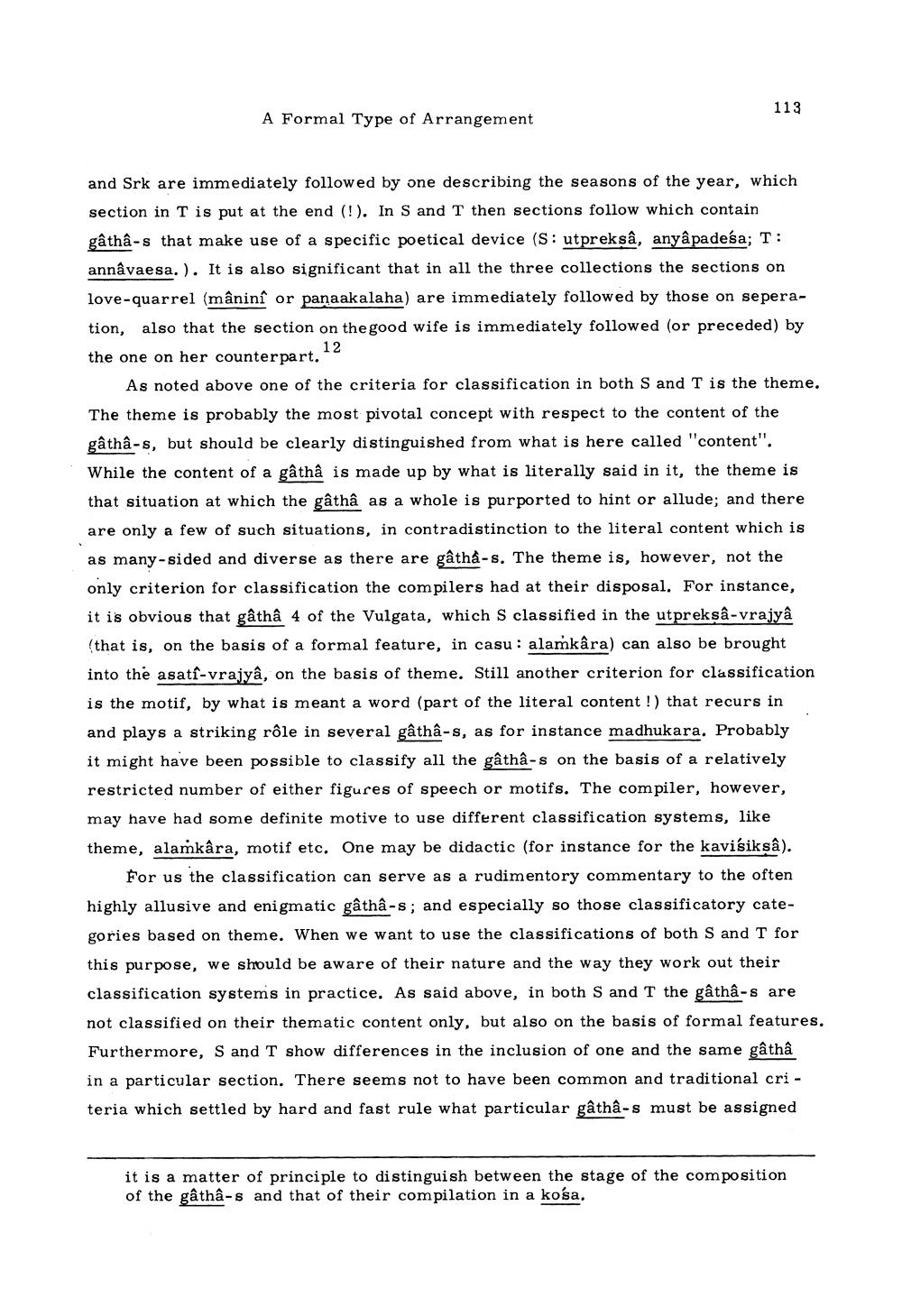Book Title: Studien Zur Indologie Und Iranistik Author(s): Gert Klingenschmitt, Albrecht Wezler, Michael Witzel Publisher: Gert Klingenschmitt, Albrecht Wezler, Michael Witzel View full book textPage 4
________________ 113 A Formal Type of Arrangement and Srk are immediately followed by one describing the seasons of the year, which section in T is put at the end (!). In S and T then sections follow which contain gâthâ-s that make use of a specific poetical device (S: utprek sâ, anyâ padesa; T: annâvaesa. ). It is also significant that in all the three collections the sections on love-quarrel (mâninî or panaakalaha) are immediately followed by those on seperation, also that the section on the good wife is immediately followed (or preceded) by the one on her counterpart." As noted above one of the criteria for classification in both S and T is the theme. The theme is probably the most pivotal concept with respect to the content of the gâthâ-s, but should be clearly distinguished from what is here called "content". While the content of a gâthâ is made up by what is literally said in it, the theme is that situation at which the gâthâ as a whole is purported to hint or allude; and there are only a few of such situations, in contradistinction to the literal content which is as many-sided and diverse as there are gâthà-s. The theme is, however, not the only criterion for classification the compilers had at their disposal. For instance, it is obvious that gâthâ 4 of the Vulgata, which S classified in the utpreksâ-vrajya (that is, on the basis of a formal feature, in casu : alamkâra) can also be brought into the asati-vrajyâ, on the basis of theme. Still another criterion for classification is the motif, by what is meant a word (part of the literal content !) that recurs in and plays a striking rôle in several gâthâ-s, as for instance madhukara. Probably it might have been possible to classify all the gâthâ-s on the basis of a relatively restricted number of either figures of speech or motifs. The compiler, however, may have had some definite motive to use different classification systems, like theme, alamkâra, motif etc. One may be didactic (for instance for the kaviśiksâ). For us the classification can serve as a rudimentory commentary to the often highly allusive and enigmatic gâthâ-s; and especially so those classificatory categories based on theme. When we want to use the classifications of both S and T for this purpose, we should be aware of their nature and the way they work out their classification systems in practice. As said above, in both S and T the gâthâ-s are not classified on their thematic content only, but also on the basis of formal features. Furthermore, S and T show differences in the inclusion of one and the same gâthâ in a particular section. There seems not to have been common and traditional cri - teria which settled by hard and fast rule what particular gâthâ-s must be assigned it is a matter of principle to distinguish between the stage of the composition of the gâthâ-s and that of their compilation in a kosa,Page Navigation
1 2 3 4 5 6 7 8 9 10 11 12 13 14 15 16 17 18 19 20 21 22
